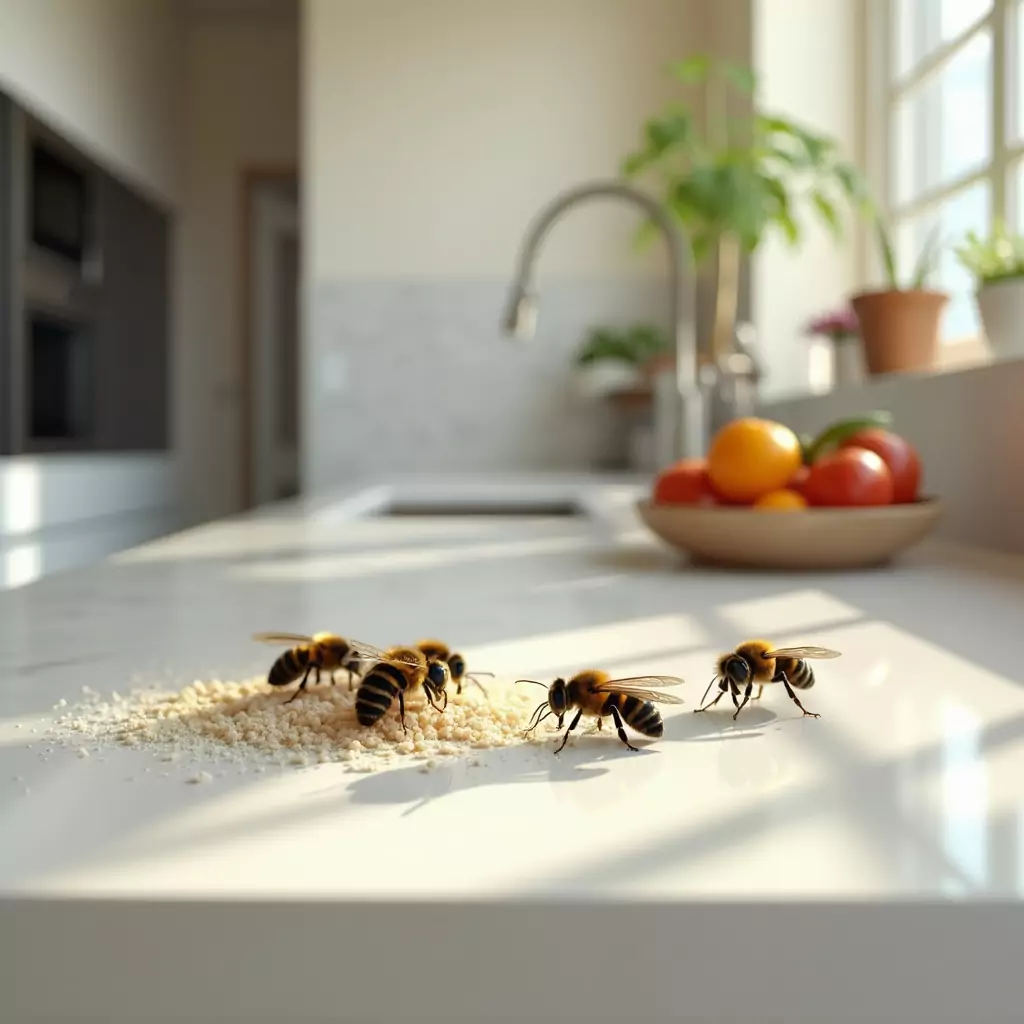Bee Problem at Home: Safe and Humane Solutions
Bee Problem at home: What You Need to Know
Dealing with a bee problem at home can be stressful for homeowners. Bees are essential pollinators that help our environment thrive. Still, acting safely and responsibly is critical when they nest near your home. This guide will help you understand bee behavior, identify infestations, and explore humane solutions to manage the issue.
Bee Problem at home: Understanding Bee Invasions
Not all bee situations are the same. A proper understanding of the different scenarios can help you address the issue effectively:
Recurring Attractions: Conditions that continually draw bees to your property, such as food sources or standing water.
Bee Swarms: Temporary gatherings of bees looking for a new home. These are often harmless and short-lived.
Established Nests: Bees have already created a permanent home in structures or trees.
Bee Problem at home: Common Bee Problem Areas
Bees can set up residence in various parts of your home and yard, including:
- Wall cavities
- Roof spaces
- Garden sheds
- Abandoned structures
- Tree hollows near your house
- Underground spaces
Identifying these areas early can help prevent a minor issue from escalating.
Signs of a Bee Problem
Recognizing the signs of a bee problem can help you take action sooner:
- Large numbers of bees consistently around your property
- Visible honeycombs or nest structures
- Buzzing sounds within walls or structures
- Bees enter and exit through small holes or cracks
Safety First: What Not to Do
Before taking any action, follow these critical safety guidelines:
- Do not attempt to remove bee nests or swarms without professional help.
- Avoid using pesticides or trying to kill bees. This is harmful and may worsen the problem.
- Keep children and pets away from bee-populated areas.
- Do not seal entry points without consulting a professional; this can trap bees inside your walls.
Responsible Bee Management
Professional Removal
The most ethical and safe approach to dealing with a bee problem is to contact a professional bee removal service. These experts can:
- Safely relocate bee colonies
- Identify the specific bee species
- Prevent future infestations
- Minimize harm to the bee population
If you’re tackling multiple pest issues, check out our article on Rodent Control Without Cruelty: Humane Solutions for Your Rodent Problem.
Preventative Measures
To reduce the likelihood of bee invasions:
- Seal cracks and potential entry points around your home.
- Remove standing water sources.
- Keep garbage areas clean and sealed.
- Trim vegetation away from your house.
- Use bee-repelling plants like mint, citronella, or eucalyptus in your garden.
Understanding Bee Conservation
Bees play a critical role in pollination and biodiversity. Honeybees and native bee species face habitat loss, pesticides, climate change, and disease threats. Relocation, rather than extermination, ensures we protect these vital pollinators.
Learn more about conservation from the EPA Pollinator Protection Guidelines.
When to Call a Professional
Reach out to a bee removal specialist immediately if you notice:
- Large bee swarms
- Nests inside wall cavities
- Aggressive bee behavior
- Allergic reactions to bee stings
- Nests near high-traffic areas
DIY Prevention Tips
While professional help is recommended for established nests, you can take these preventative steps:
- Use caulk to seal small cracks and entry points.
- Install fine mesh screens on vents and openings.
- Keep your yard clean and free of fallen fruit.
- Avoid leaving sweet drinks or food outdoors.
Cost Considerations
Professional bee removal can cost between $100 and $1,000 depending on factors such as:
- The location of the nest
- The size of the colony
- The complexity of the removal process
- Local service rates
Investing in professional removal ensures safety and long-term prevention.
Conclusion
Dealing with bees around your home requires a careful, informed approach. By understanding bee behavior, taking preventative measures, and seeking professional help, you can effectively manage bee problems while respecting these essential pollinators.
If you want more ideas to protect your home, explore Budget Bedroom Makeover: 6 Affordable Ways to Refresh Your Sleep Space.
FAQs
Q: How can I safely remove a bee nest?
A: The safest way to remove a bee nest is by contacting a professional bee removal service. They will handle the bees humanely and prevent further issues.
Q: What attracts bees to my property?
A: Bees are often attracted to standing water, sweet foods, and vegetation near your home.
Q: Can sealing cracks prevent bee infestations?
A: Sealing cracks and entry points is a simple and effective way to keep bees from nesting in your home.
For more information, visit our guide on Rodent Control Without Cruelty: Humane Solutions for Your Rodent Problem.

